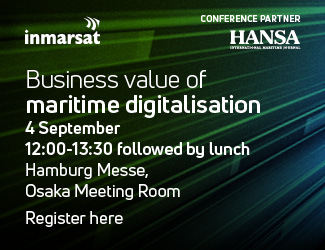Calculation of asset value is an important aspect in shipping – especially in time of crisis and consolidation. For this demand, the online platform VesselsValue.com has developed the new tool Income Based Valuation
Income value, sometimes called »long term asset value« or »value in use«, measures the value of an asset in terms[ds_preview] of its expected future earnings. The most common method for doing this, which is used by VesselsValue, is discounted cash flow analysis: income value is calculated as the sum of the discounted projected annual earnings over the remaining life of the vessel plus the discounted residual (scrap) value.
Two ways for calculation
The resource for income value works in two ways, as Quantitative Consultant Alexander Adamou says to HANSA. Firstly, it generates an automated income value for every vessel using default calculation inputs provided by VesselsValue. Subscribers will be able to view the current VesselsValue income value of the vessel for that day along with daily historic values going back to January 2007. Secondly, the resource comes with an interface which enables the user to edit the inputs and create a customised income value. With this, it can be seen how any parameter can significantly affect the value.
»Automated Values are recalculated each day«
»The model utilises the precise age of the vessel, estimating the remaining trading life of the vessel to the nearest day. Automated values are recalculated each day to take account of this. In effect, daily depreciation – rather than annual – is built into the calculation. Automated values are based on the individual specification of each ship. We alter the charter rate and OPEX, to account for the current age, size of the ship. We adjust the residual value and remaining life in a similar way. Discount rates, other rates, working life, survey costs and schedule, and scrap price are determined by the class of ship«, says Adamou.
A key aspect of the interface is a chart which graphically displays the main components of any income value calculation: revenue, expenditure, earnings and discounted earnings for each remaining year, plus the residual and discounted residual value
The user can create a customised income value by editing any of the following assumptions: lightweight; ship life; available days in normal year; current charter rate; forward charter rate; charter reduction for age; OPEX rate; OPEX increase for age; charter commission; management fee; inflation rates for charter; inflation rate for OPEX; inflation rate for scrap; discount rate; scrap price; demolition commission. The user can also add fixed charters. Finally, the number of booked days, charter revenue, OPEX and survey costs for each individual year in the remaining life of the ship can be edited separately.
As well, the resource has a »goal-seeking« tool. This allows the user to specify a particular amount for the income value and then compute the implied charter rate or implied discount rate which would generate that value.
Data Sources
Freight rates, scrap prices, and other relevant market data are obtained from a variety of data suppliers, including the Baltic Exchange and Hamburg Shipbrokers’ Association (VHSS). Quarterly discount rates for ship types are provided by the Long Term Asset Value (LTAV) Association in Hamburg, which commissions them from accountancy firm PwC. VesselsValue is a member of the LTAV Association.
Information on operating expenses, survey schedules and survey costs is obtained from Seasure Shipping, a London-based sale and purchase shipbroker and sister company of VesselsValue.
However, of all the inputs which contribute to the calculation of income value the charter rate and its duration probably have the greatest effect.
The expert explains the development of the tool with some new demands in the course of the crises: »In shipping Market Value has always been seen as the primary way of valuing a vessel. But during the 2008 global economic crisis market values for cargo ships fell dramatically and leading brokers withdrew their valuation services. In this context, it was felt by some that that the potential earnings of a ship might be a better yardstick of what it was truly worth. In 2009 VHSS introduced the Hamburg Ship Evaluation Standard for calculating long term asset value of vessels and since then there has been much debate in the shipping press over the relative merits of the alternative approaches.«
According to Adamou, one of the advantages is, that users will have the potential to compare income value with Market Value and Book Value over a timeframe. As well, they can use the resource to generate their own income value based partly or entirely on their own assumptions. the model can be used to investigate scenarios. The effect of changing operational parameters can be seen and the goal seeking tool reverses the calculation by computing the implied charter or discount rate.
Michael Meyer














